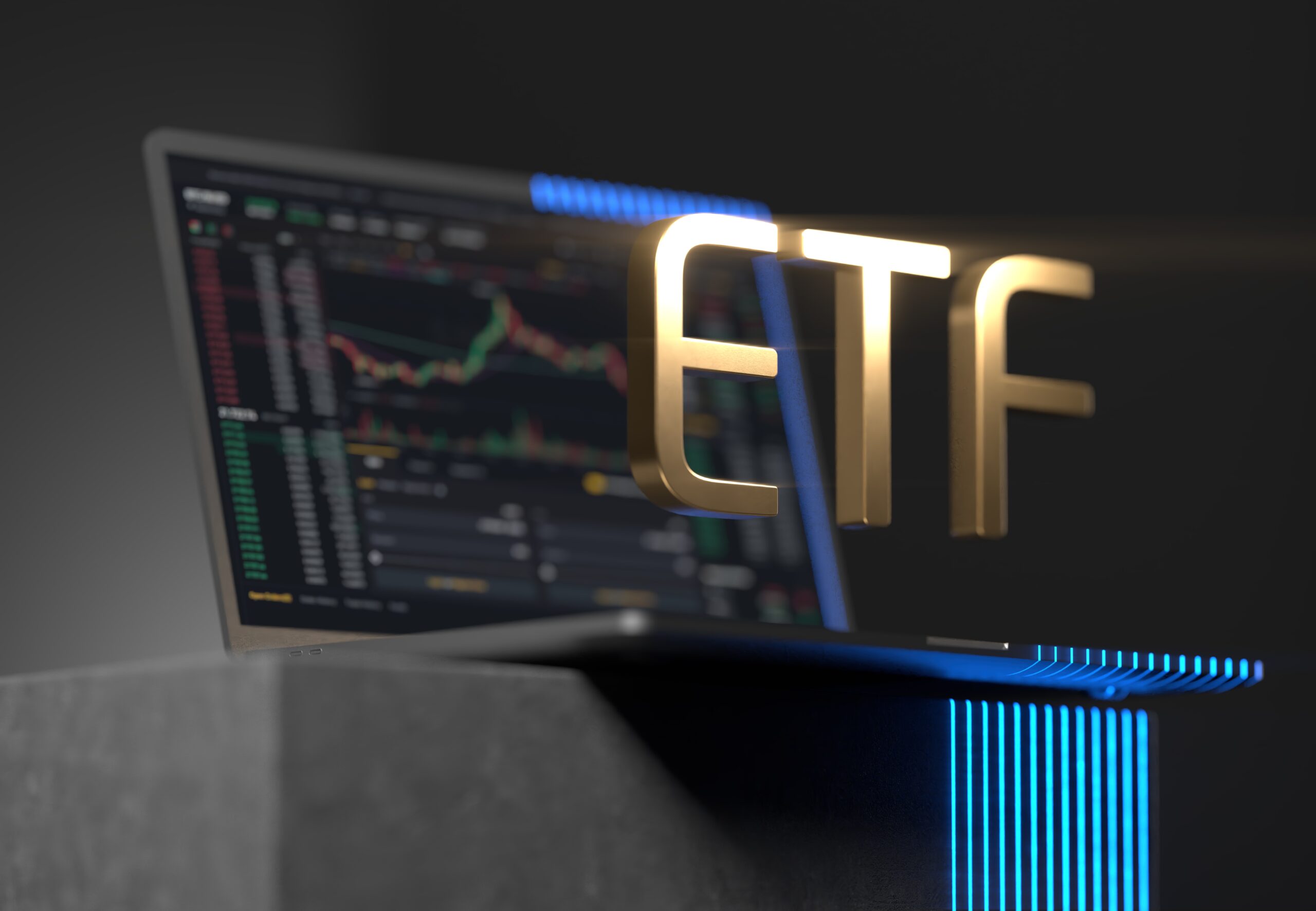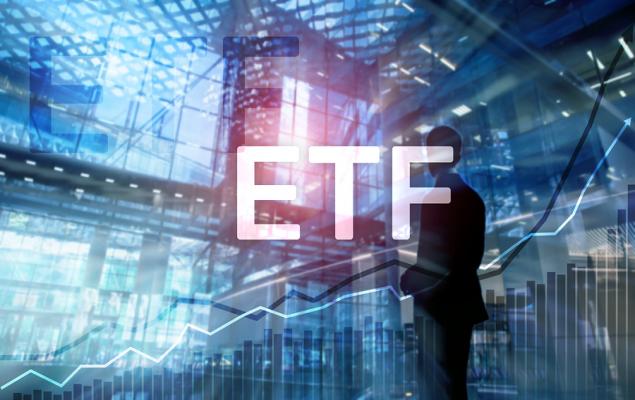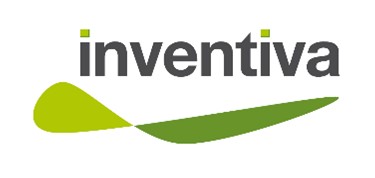ETFs
Best Small Cap ETFs in June 2024

Are you looking for the next big thing in the stock market? It may be hiding among small caps, as these smaller companies often remain overlooked by investors. A way of gain exposure to the entire market segment is to buy a small cap ETF.
Topics covered on this page:
What is a small cap ETF?
A small capitalization ETFs is an exchange-traded fund that invests in the smallest companies in the market through what are called small-cap or small-cap stocks. Small-cap ETFs give you an easy way to buy the small-cap “haystack” rather than chasing the best performers.
Small-cap stocks may look small, but they’re usually not that small. The total value of all their outstanding shares is typically between a few hundred million dollars and a few billion dollars. However, this is not much for the stock market, where the market capitalization can reach a trillion dollars.
Investors like small caps because they can offer higher potential returns than large-cap stocks, which are typically represented by the S&P 500 Index. However, because they are smaller and have fewer financial resources, they are also often riskier and more volatile.
Because of these risks, investing in small, individual stocks is best left to more advanced investors. But even new investors can buy a basket of these companies through a small-cap ETF and take advantage of the potentially higher returns of smaller, undiscovered stocks.
The Best Performing Small Cap ETFs
Bankrate selected its best funds based on the following criteria:
- US funds that appear in ETF.com’s small cap filter
- Funds among the best performing over the last five years
- Performance measured as of May 31, 2024 using the most recent figures from ETF.com.
Invesco S&P SmallCap 600 Income ETF (RWJ)
This ETF is based on the S&P SmallCap 600 Revenue-Weighted Index, which reweights stocks in the S&P SmallCap 600 Index based on a company’s revenue.
- Performance since the start of 2024: -1.2 percent
- Historical performance (annual over 5 years): 16.7 percent
- Expense rate: 0.39 percent
Pacer US Small Cap Cash Cows 100 ETF (CAV)
This ETF includes the top 100 stocks in the S&P SmallCap 600 based on their free cash flow yield.
- Performance since the start of 2024: -5.0 percent
- Historical performance (annual over 5 years): 16.7 percent
- Expense rate: 0.59 percent
Invesco S&P SmallCap Value with Momentum ETF (XSVM)
This ETF tracks the S&P 600 High Momentum Value Index, which is comprised of 120 stocks with the highest scores in terms of momentum and value factors.
- Performance since the start of 2024: -0.1 percent
- Historical performance (annual over 5 years): 15.8 percent
- Expense rate: 0.36 percent
Invesco S&P SmallCap 600 Pure Value ETF (RZV)
This fund is based on the S&P SmallCap 600 Pure Value Index, which selects stocks that perform well on value, using metrics such as price-to-earnings ratio and book-to-price ratio.
- Performance since the start of 2024: -4.2 percent
- Historical performance (annual over 5 years): 12.9 percent
- Expense rate: 0.35 percent
Invesco S&P SmallCap Momentum ETF (XSMO)
This ETF is based on the S&P SmallCap 600 Momentum Index, which includes 120 stocks from the S&P SmallCap 600 Index with the highest “momentum scores.”
- Performance since the start of 2024: 7.5 percent
- Historical performance (annual over 5 years): 12.3 percent
- Expense rate: 0.39 percent
Invesco Dorsey Wright SmallCap Momentum ETF (DWAS)
This ETF is based on stocks in the Dorsey Wright SmallCap Technical Leaders Index, which includes stocks with strong momentum.
- Performance since the start of 2024: 4.1 percent
- Historical performance (annual over 5 years): 12.3 percent
- Expense rate: 0.60 percent
ALPS O’Shares US Small Cap Quality Dividend ETF (OUSM)
This ETF tracks the performance of the O’Shares US Small-Cap Quality Dividend Index, which includes stocks with low volatility, dividend growth, and high-quality fundamentals.
- Performance since the start of 2024: 4.8 percent
- Historical performance (annual over 5 years): 11.8 percent
- Expense rate: 0.48 percent
Are small cap ETFs a good investment?
Investing in small-cap ETFs can offer attractive returns provided they are purchased at reasonable prices, but there are some drawbacks to be aware of.
Small-cap ETFs allow you to buy a diversified small business portfolio at a relatively low cost. They also won’t require the extensive research that investing in individual companies requires and can be quickly added to your overall portfolio to build exposure to the small-cap universe. Small caps can generate high returns as they grow into larger businesses. Many of today’s most successful companies started with a small cap.
But one of the downsides of investing in small-cap ETFs is that as top-performing companies grow, they are no longer considered small-cap and many funds are forced to sell them. to stay in line with their investment objectives. You also won’t benefit from the broad diversification offered by other funds. So, if an economic development has a negative impact on the small cap universe, you will not be protected. Small-cap funds also tend to be more volatile than funds that hold larger, more established companies.
(You can also consult our list of best large cap ETFs And best mid cap ETFs.)
Conclusion
Small-cap ETFs are an attractive, low-cost way to invest in some of the fastest-growing companies on the market, without the same risks of buying individual stocks. But like all investments in the stock market, they are not without risks and other disadvantages.
Editorial Disclaimer: All investors are advised to conduct their own independent research into investment strategies before making an investment decision. Furthermore, investors are advised that past performance of investment products is not a guarantee of future price appreciation.
ETFs
3 Best Crypto ETFs to Buy Now and Hold for the Long Term

Investors looking to diversify their cryptocurrency holdings now have a choice, thanks to these three ETFs.
The launch of a new spot Bitcoin (BTC -1.01%) ETFs in January were a watershed event for the crypto industry. This is arguably the biggest new product launch on Wall Street in nearly 30 years. The new ETFs have opened up crypto investing to the individual investor, making Bitcoin as easy to buy and sell as a tech stock.
In doing so, these new spot Bitcoin ETFs opened a discussion on the best ways to create and diversify a long-term crypto portfolio. In some cases, invest in a basket of companies or cryptocurrencies can be more effective than trying to pick a winner in a volatile sector. With that in mind, here’s a closer look at the three top crypto ETFs to buy and hold for the long term.
iShares Bitcoin Trust
There are almost a dozen new spot Bitcoin ETFs choice, but the undisputed leader at the moment is the iShares Bitcoin Trust (I BITE 0.10%). It now has over $17 billion in assets under management and has an expense ratio of just 0.25%. The ETF is black rockthe world’s largest asset manager.
Image source: Getty Images.
Granted, there isn’t much difference between the top-performing Bitcoin ETFs. All of them hold only one asset – Bitcoin – and all of them are trying to do it as cheaply and efficiently as possible. From my perspective, the two main points of differentiation are size (assets under management) and fees.
In both of these areas, the iShares Bitcoin Trust excels. It’s the largest of the new spot Bitcoin ETFs, and its 0.25% expense ratio is now the industry standard (although you can find slightly cheaper fees with Ark Invest, which offers a expense ratio of 0.21% for its ETF).
Bitwise 10 Cryptocurrency Index Fund
If you invest in crypto, you will probably want to diversify beyond Bitcoin at some point, and one way to do this is through the Bitwise 10 Cryptocurrency Index Fund (BITW -0.53%). This exchange-traded fund tracks a diverse mix of the top 10 cryptocurrencies, weighted by market cap and rebalanced monthly. It is one of the largest crypto-focused ETFs, with approximately $1.1 billion in assets under management.
Given this ETF’s focus on market cap, Bitcoin represents 68% of the fund’s holdings. Ethereum (ETH -1.75%) represents an additional 23%. Solana (GROUND -2.46%) and XRP (XRP -1.38%) combined represent an additional 5.2%. All other cryptos have a weighting of less than 1%.
Just keep in mind that if you already hold a large position in Bitcoin, either directly or indirectly (e.g. through iShares Bitcoin Trust), you may not get nearly the same price. benefits of diversification that you expect to receive. Yes, the fund holds 10 cryptos. But Bitcoin easily represents the lion’s share of the fund’s holdings.
Once the newly approved Ethereum spot ETFs begin trading, you will be able to make the case that it will be simpler and more profitable to simply purchase the Bitcoin and Ethereum ETFs. It really depends on how much exposure you want to smaller, lesser-known cryptocurrencies that can help round out a diversified portfolio.
Amplify Transformational Data Sharing ETF
Finally, it is worth considering how to gain exposure to companies in the blockchain and crypto industry. This includes exposure to Bitcoin mining companies, as well as cryptocurrency exchanges and blockchain payments companies.
A good choice here is the Amplify Transformational Data Sharing ETF (BLOCK -0.39%), which provides access to a wide range of more than 50 blockchain and crypto securities. Currently, the fund’s largest holdings include Global Coinbase, Robinhood MarketsAnd MicroStrategy. He also invests in Bitcoin mining companies like Marathon Digital Funds and blockchain payment companies like Block.
While you could theoretically buy all of these crypto stocks individually, letting the ETF handle this for you is likely cheaper and more efficient. The expense ratio is just 0.76% and the fund’s holdings appear to be balanced among the top companies driving innovation in the crypto market. No single company represents a share greater than 5% of the fund’s assets.
Diversify with ETFs
Most likely, Wall Street is not yet finished offering new ETFs to crypto investors. If the new Ethereum spot ETFs perform much like the new Bitcoin spot ETFs, it is highly likely that the process will continue with other single-cryptocurrency ETF offerings.
When you mix these single-cryptocurrency ETF offerings with ETFs that provide broad exposure to the blockchain sector, you can enjoy even greater diversification benefits. Don’t forget to take a look under the hood before purchasing. If you like the fund’s holdings and are comfortable with the expense ratios charged, these crypto ETFs could be a fantastic way to diversify your portfolio and build wealth over the long term.
Dominique Basulto has positions in Bitcoin, Ethereum and Solana. The Motley Fool holds positions and recommends Bitcoin, Block, Coinbase Global, Ethereum, Solana and XRP. The Motley Fool has a disclosure policy.
ETFs
Sector ETFs to benefit from rising bets on rate cuts

Bets on a rate cut have intensified again following the latest data releases, which signal a slowdown in the world’s largest economy. Traders now see a nearly 69% chance of a rate cut in September, according to the CME’s FedWatch tool, up from about 50% last week.
U.S. manufacturing activity slowed for the second straight month in May, and U.S. construction spending unexpectedly fell for the second straight month in April due to declines in nonresidential activity. The latest PCE inflation data revealed that US inflation stabilized in April, suggesting that the US central bank’s interest rate cut plans later this year remained intact.
Additionally, the Bank of Canada’s decision to lower its benchmark rate for the first time in four years and the European Central Bank’s decision to cut rates for the first time since 2019 also fueled optimism about a more flexible monetary policy.
A boon for the sectors
Lower interest rates generally lead to lower borrowing costs, making it easier for businesses to expand their businesses, leading to increased profitability. This in turn stimulates economic growth and thus boosts the stock market.
In particular, high-dividend sectors, such as utilities and real estate, will be the biggest beneficiaries of rate cuts, given their sensitivity to interest rates. This is especially true since these securities offer higher yields due to their outsized returns. In real estate, lower rates can stimulate housing market activity by making mortgages more affordable. Additionally, securities in capital-intensive sectors like telecommunications will also benefit from lower rates. Companies will also face lower lending rates over time (read: Leveraging the Power of Utilities and Small Caps with These ETFs).
Additionally, the rate cut will also have a positive impact on consumer discretionary and financial services. For consumer discretionary sectors, reduced borrowing costs may lead to increased consumer spending. In the financial sector, while lower rates can squeeze banks’ net interest margins, they can also encourage lending and potentially lead to increased lending activity to individuals and businesses.
Additionally, Fed rate cuts tend to stimulate foreign capital inflows to emerging markets like India. As the outlook for the Indian economy remains strong, the rate cuts will boost foreign capital inflows, which could drive the market to new highs. Gold, which has gained momentum recently due to safe-haven demand amid heightened geopolitical tensions, will also continue to shine as lower interest rates would increase the metal’s appeal.
With this in mind, we have highlighted sector ETFs that are expected to explode with lower rates.
The story continues
ETF to win
Vanguard Real Estate ETF (VNQ)
Vanguard Real Estate ETF targets the real estate segment of the broader U.S. market. It tracks the MSCI US Investable Market Real Estate 25/50 Index and holds 158 stocks in its basket, with no one accounting for more than 13% of the shares. VNQ holds key holdings in retail REITs, telecom tower REITs and industrial REITs each with double-digit exposure.
The Vanguard Real Estate ETF is the most popular and liquid ETF, with $31.8 billion in assets under management and an average daily volume of approximately 4 million shares per day. It charges 13 basis points in fees per year to investors and has a Zacks ETF Rank #3 (Hold) with a Medium Risk Outlook.
iShares US Home Construction ETF (ITB)
The iShares US Home Construction ETF provides exposure to U.S. companies that manufacture residential homes by tracking the Dow Jones US Select Home Construction Index.
With $2.7 billion in assets under management, the iShares US Home Construction ETF holds a basket of 44 stocks, with a heavy focus on the top two companies. The product charges 40 basis points in annual fees and trades a large volume of around 2 million shares per day on average. The iShares US Home Construction ETF has a Zacks ETF Rank #3 with a High Risk Outlook (read: ETFs to Play as Mortgage Rates Look Likely to Fall).
Consumer Discretionary Select Sector SPDR Fund (XLY)
The SPDR Consumer Discretionary Select Sector fund provides exposure to the broad consumer discretionary sector and tracks the Consumer Discretionary Select Sector Index. It holds 52 stocks in its basket, with key holdings in general retail, hotels, restaurants and leisure, specialty retail and automobiles each with a double-digit allocation.
The SPDR Consumer Discretionary Fund is the largest and most popular product in this space, with $18.5 billion in assets under management and an average daily volume of approximately 4 million shares. It charges 9 basis points in annual fees and has a Zacks ETF Rank #3 with a Medium Risk Outlook (read: 5 Top Ranked Beaten ETFs to Buy for a Turnaround).
SPDR Gold Trust ETF (GLD)
The SPDR Gold Trust ETF tracks the price of gold bullion measured in US dollars and held in London under the custody of HSBC Bank USA. This is an ultra-popular gold ETF with $62.5 billion in assets under management and heavy volume of around 9 million shares per day. The SPDR Gold Trust ETF charges 40 basis points in fees per year to investors and has a Zacks ETF Rank #3.
iShares MSCI India ETF (INDIA)
The iShares MSCI India ETF provides exposure to large and mid-cap stocks in India by tracking the MSCI India Index and charging 65 basis points in fees per year to investors. Holding 146 stocks in its basket, the fund has key exposure to the financials, consumer discretionary, information technology and energy sectors.
The iShares MSCI India ETF is the largest and most popular ETF in this space, with $10.3 billion in assets under management and an average trading volume of 4.4 million shares per day. He has a Zacks Ranked #3 ETF with an average risk outlook (read: Indian ETFs to Soar on Modi’s Likely Victory).
Want the latest recommendations from Zacks Investment Research? Today you can download the 7 best stocks for the next 30 days. Click to get this free report
SPDR Gold Stock (GLD): ETF Research Reports
Vanguard Real Estate ETF (VNQ): ETF Research Reports
iShares US Home Construction ETF (ITB): ETF Research Reports
Consumer Discretionary Sector SPDR ETF (XLY): ETF Research Reports
iShares MSCI India ETF (INDA): ETF Research Reports
ETFs
US Bitcoin Spot ETFs See Longest Entry Streak of 18 Days

US Bitcoin Spot ETFs See Longest Entry Streak of 18 Days
American spot Bitcoin Exchange-traded funds (ETFs) achieved their longest streak of consecutive net inflows since their inception, recording an 18-day streak of positive flows on Thursday.
The 11 spot Bitcoin ETFs collectively saw a net inflow of $217.78 million, with BlackRock’s IBIT leading the way. The largest spot Bitcoin ETF by net assets, IBIT, generated $350 million in net inflows on Thursday, according to SoSoValue data. Other notable ETFs, such as those from Fidelity and VanEck, also reported positive net inflows, although their contributions were significantly lower than those of BlackRock’s IBIT.
However, not all ETFs have seen positive flows. Ark Invest’s ARKB saw net outflows of $96.6 million, marking one of the ETF’s largest outflows. Similarly, Grayscale’s recently converted GBTC saw net outflows of $37.5 million, and Bitwise’s BITB reported net outflows of $3 million. In contrast, the remaining five spot Bitcoin ETFs, including Invesco’s BTCO, saw no flows on Thursday.
Since their launch in January, the 11 spot Bitcoin ETFs have accumulated a total net inflow of $15.56 billion. This recent streak of net inflows indicates a recovery from the stagnation seen in April and May, although current inflows are still below the peak levels recorded in March, according to The Block’s data dashboard. These positive and sustained net inflows, notably thanks to BlackRock’s IBIT, underline the continued strong interest and confidence of investors in Bitcoin as an asset class.
ETFs
3 Top-Ranked ETFs Under $20 for Your Portfolio – June 7, 2024

Most investors want to invest their money in stocks, but may not be able to afford large stakes in valuable companies whose shares are more expensive. For them, lower-priced stocks could be attractive because they would allow them to buy more shares instead of just a handful of more expensive stocks for the same amount. For example, an investor willing to spend $10,000 can either buy at least 500 shares of a stock trading for less than $20 or only 100 shares of a stock trading for $100.
Additionally, low-priced stocks often offer the potential for large percentage gains. For example, if a stock is valued at $20 and rises by $1, that represents a 5% gain. This contrasts with stocks priced at $100 or more, which see gains of 1% or less if the stock rises by $1.
Additionally, low-priced stocks have high liquidity levels, giving them an added advantage. This means that cash can be converted quickly and investors can easily withdraw their money from the securities. In fact, trading higher average daily volumes keeps the bid/ask spread tight and does not incur additional costs for investors.
However, lower priced stocks can be much more volatile than higher priced stocks, leading to significant losses if the stock price declines. The latter are more susceptible to price manipulation, such as “pump and dump” schemes, which can lead to significant losses. Additionally, low-priced stocks, especially penny stocks, are owned by smaller, less established companies. These companies may not be required to file with the SEC, making it more difficult to find reliable information.
Nonetheless, low-priced stocks are affordable and allow for greater diversification rather than investing in higher-priced stocks. The recent volatility has given investors a great opportunity to exploit some of these stocks. The preference is not just limited to the world of stocks, but can be felt in the ETF space. In fact, there are currently only a handful of ETFs currently trading under $20 out of nearly 2,000 funds, suggesting that choices are limited for investors who want to get a decent number of shares of their investment.
So let’s look at some of the ETFs that cost less than $20 and have a Zacks ETF Rank #1 (Strong Buy) or #2 (Buy). These low-cost ETFs could generate huge gains in the coming months, depending on market trends.
Cancer therapeutic ETF range (CNCR – Free report) – Last closing price: $14.66
Although biotechnology companies are rushing into weight-loss drugs, cancer will create potentially significant market demand for new, novel and effective treatments. As the leading cause of death worldwide, cancer remains one of the most concerning public health issues and will continue to be at the forefront of investment and technological innovation (read: ETFs will benefit from the boom in weight-loss drugs).
Range Cancer Therapeutics ETF provides exposure to a broad range of cancer therapeutic modalities. It tracks the Range Oncology Therapeutics Index and holds 77 stocks in its basket, each representing less than 3.1% of assets. The Range Cancer Therapeutics ETF has $16.3 million in assets under management and charges 79 basis points in annual fees. The fund trades an average daily volume of 17,000 shares.
First Trust AlphaDEX Energy Fund (FXN – Free report) – Last closing price: $18.34
The energy sector has witnessed volatility this year. As the decision by the OPEC cartel and other allies to increase production later this year and rising oil inventories weigh on the price of oil, rate cuts in Canada and Europe as well as new bets on a Fed rate cut are good news for the sector.
The First Trust Energy AlphaDEX fund tracks the StrataQuant Energy Index, which uses the AlphaDEX stock-picking methodology to select stocks from the Russell 1000 index. It holds 37 stocks in its basket, none of which account for more than 5.4 % of shares. Crude producers hold the largest share (50%), followed by a double-digit allocation in pipelines, oil refining and marketing, and oilfield equipment and services. The First Trust Energy AlphaDEX fund has amassed $622.2 million in its asset base while trading an average daily volume of 2.5 million shares.
Global Cloud Computing ETF (NAIL – Free report) – Last closing price: $19.69
Demand for cloud computing will remain high, given the current boom in artificial intelligence (AI). A large number of businesses are adopting cloud computing to leverage AI capabilities. Increased investment in AI is expected to increase the cloud’s share of total IT spending from around 15% in 2023 to around 40% in 2030, as businesses look to capitalize on the flexibility of the cloud model (read: Can NVIDIA’s AI chip dominance continue?).
The Global -forms as a service, infrastructures as a service. a-Service, managed server storage and data center real estate investment trusts, and/or cloud and edge computing infrastructure and hardware. It tracks the Indxx Global Cloud Computing index and holds 36 stocks in its basket. The Global X Cloud Computing ETF has $447.1 million in assets under management and trades an average daily volume of 177,000 shares. The ETF charges 68 basis points in annual fees.
Want key ETF news sent straight to your inbox?
The free Zacks Funds Newsletter will bring you top news, analysis, and top-performing ETFs every week.
-

 DeFi1 year ago
DeFi1 year ago👀 Lido prepares its response to the recovery boom
-

 Fintech1 year ago
Fintech1 year ago121 Top Fintech Companies & Startups To Know In 2024
-

 ETFs1 year ago
ETFs1 year agoGold ETFs see first outing after March 2023 at ₹396 cr on profit booking
-

 DeFi1 year ago
DeFi1 year agoTON Network Surpasses $200M TVL, Boosted by Open League and DeFi Growth ⋆ ZyCrypto
-

 Fintech1 year ago
Fintech1 year agoFintech unicorn Zeta launches credit as a UPI-linked service for banks
-

 ETFs1 year ago
ETFs1 year agoLargest US Bank Invests in Spot BTC ETFs While Dimon Remains a Bitcoin Hater ⋆ ZyCrypto
-

 News1 year ago
News1 year agoSalesforce Q1 2025 Earnings Report (CRM)
-

 ETFs1 year ago
ETFs1 year agoCoinbase ETFs Confident Spot Ether Could Hit Market Sooner Than We Thought ⋆ ZyCrypto
-

 News1 year ago
News1 year agoInventiva reports 2024 First Quarter Financial Information¹ and provides a corporate update
-

 ETFs1 year ago
ETFs1 year agoEthereum ETFs about to be approved? — Here are the candidates awaiting confirmation ⋆ ZyCrypto
-

 Fintech1 year ago
Fintech1 year agoFintech giant Flutterwave loses ₦11 billion due to security breach
-

 ETFs1 year ago
ETFs1 year agoBitcoin ETFs See $300 Million in Net Inflows as Bitcoin Nears $67,000 ⋆ ZyCrypto









